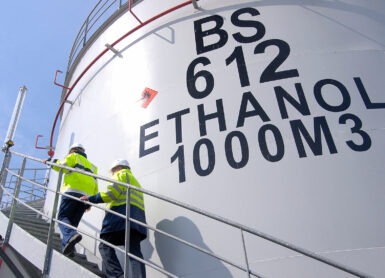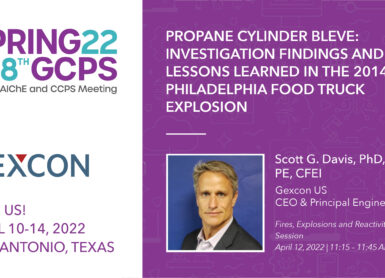
Did you know that dust could explode?
In fact, powdered milk, flour, sugar, and cornstarch, among many others, can explode.
There have been some devastating incidents that have taken place over the past decades caused by dust explosions.
On January 29th, 2003, a devastating explosion at West Pharmaceutical Services killed 6 workers and injured 38 others.

Five years later, on February 7th, 2008, a series of dust explosions at the Imperial Sugar Company killed 14 workers and injured 38 others, many were contracting life-threatening burns. Later that year, the US regulatory body OSHA issued Imperial Sugar Company almost 9 million USD in fines, the fourth largest fine in OSHA history.

One of the worst dust explosions in recent times was the one that occurred in 2014 in a large industrial plant for polishing various aluminium-alloy parts in Kunshan, China. This incident killed 75 people and seriously injured 185 others. 71 of the seriously injured died later increasing the total loss of lives to 146.
Statistics suggest that there is a dust explosion in European industry at least every day. The consequences of these dust explosions are luckily not always as bad as was the case in the examples described above but the damage to process installations and possible injuries to employees has urged regulatory bodies to issue numerous safety requirements for dust processing facilities to prevent and mitigate dust explosions.
In Europe, this happened through the so-called ATEX directives which have been transposed into national law in various countries and supported by numerous European standards (CEN) whereas in the US OSHA’s requirements have been supported by a Combustible Dust National Emphasis Program and NFPA issuing several prescriptive standards.
But what is exactly a dust explosion, and how does it happen
What is a dust explosion?
Simply put, a dust explosion is the explosion from a high concentration of fine combustible particles in the air ignited inside an enclosed space. In other words, factors such as the proper concentration level of combustible dust, oxygen, confined space, and an ignition source must be present for a dust explosion to happen.
Click here to watch the “Fundamentals of fire and explosion from handling bulk solids” webinar.
The worst dust explosion events often start as a smaller primary explosion followed by a much stronger secondary explosion.

The primary explosion normally happens when a high concentration of dust in an enclosed space is ignited and explodes. It causes the enclosure to fail resulting in a pressure wave whirling up dust in the area surrounding the enclosure, often the factory itself. The ensuing flame ignites the dust in the area surrounding the enclosure, causing a secondary explosion.
The secondary explosion can be far more destructive than the primary one. We can prevent these devastating secondary explosions by good housekeeping.
When can we get a dust explosion?

You can get a dust explosion if you have five elements of the Dust Explosion Pentagon. Those elements are as follows:
- Fuel: flammable material with “correct” particle size distribution
- Oxygen: “sufficient” oxygen/air
- Dispersion: mixing of flammable material with oxygen/air (dust cloud)
- Confinement: closed room/ equipment
- Ignition: “sufficiently strong” ignition source
Which dust could explode?
Other than the agricultural products mentioned at the beginning of this article, dust particles coming from aluminium, bronze, coal, medicines, pesticides, rubber, wood, and plastic could also explode, but not limited to these. You can read OSHA’s poster on Combustible Dust to see more examples.
Which process facilities are exposed to dust explosions?
As for process facilities, the below examples are exposed to combustible dust:
- food and drink manufacturing
- automotive manufacturing
- metal processing
- tyre and rubber manufacturing
- 3D printing
- fertilizer
- paper
- furniture manufacturing
- textiles manufacturing
- ink manufacturing
- pharmaceuticals
Dust explosions could happen in various parts of a facility, such as silos, conveying systems including bucket elevators, dust collectors, mills, etc.
Is your dust combustible?
Suppose you are unsure whether your dust is combustible or not. In that case, you can perform various tests to understand your dust’s explosion properties.

Gexcon can help you understand the ignition and explosion properties of your dust through a wide range of standardized tests, including:
- Explosibility test (yes/ no)
- Minimum Ignition Energy (MIE) test of dust cloud
- Explosion pressure development (Pmax, dP/dtmax, and KSt-value)
- Minimum Ignition Temperature of dust clouds (MITdc)
- Minimum Ignition Temperature of dust layers (MITdl)
- Lower Explosion Limit (Min. Explosible Dust Concentration) ‒ LEL
- Limiting Oxygen Concentration (LOC)
- Minimum ignition temperature of dust deposits (self-ignition) (SIT/AIT)
- Dust Layer Flammability Test (DLFT)
- Specific resistance ρ in Ω*m or Ω*mm2/m
To learn more about the dust explosion properties testing solutions, please click here.
Do you like what you read?
Get the latest trends in the field of process safety management straight to your inbox, and enhance your skills through knowledge sharing from industry experts.


